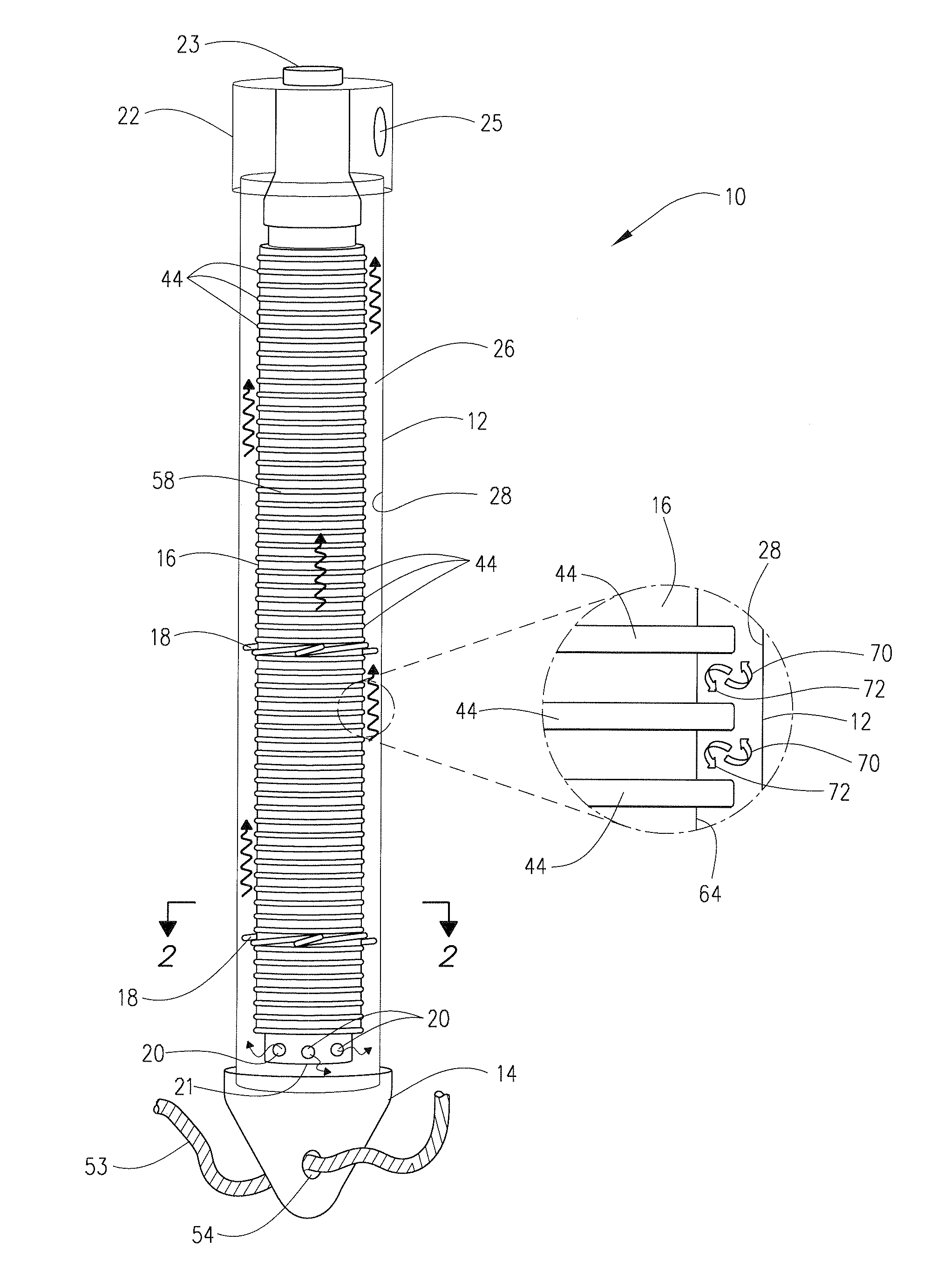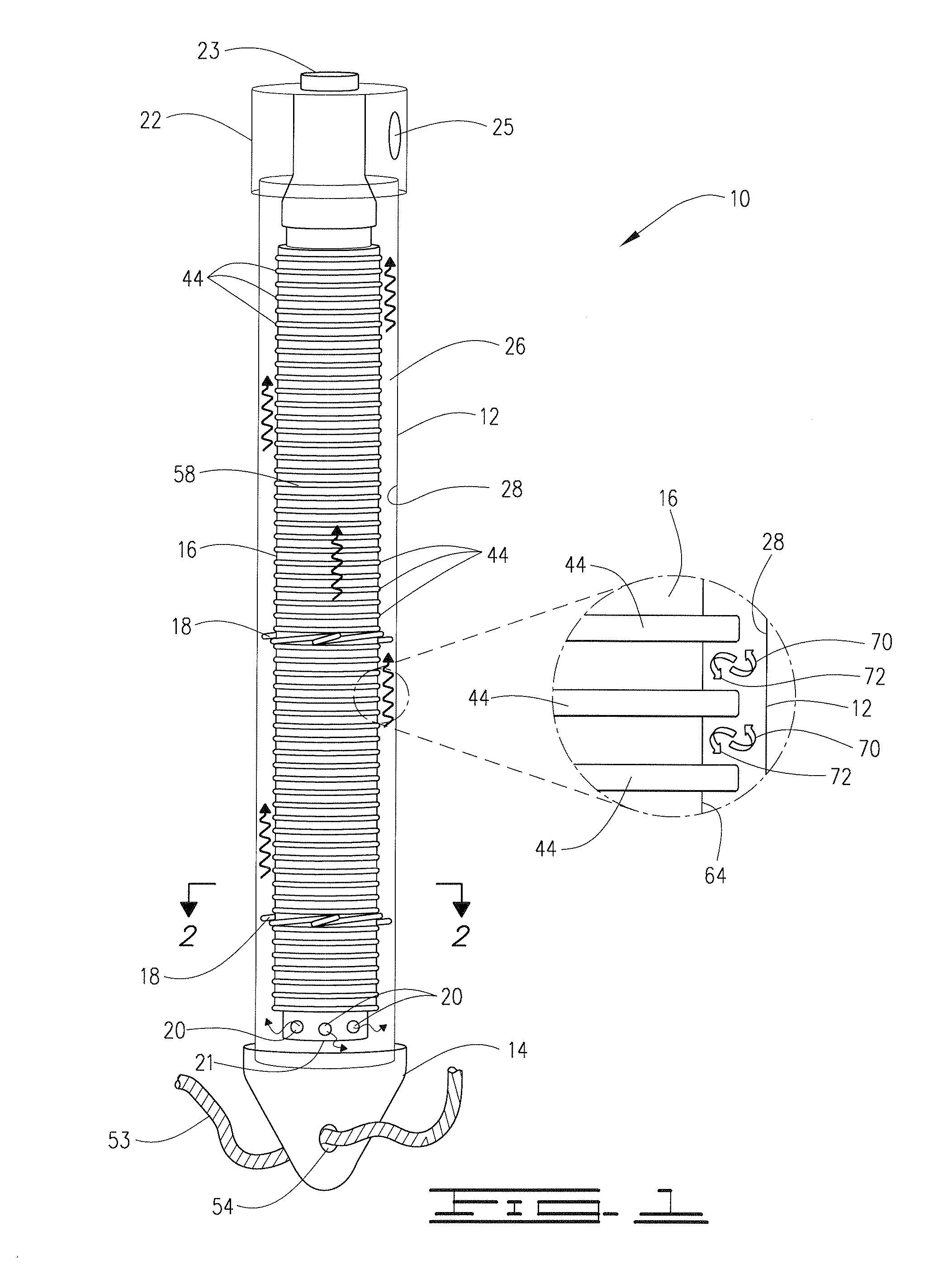Method, apparatus, conduit, and composition for low thermal resistance ground heat exchange
a ground heat exchange and low thermal resistance technology, applied in indirect heat exchangers, lighting and heating apparatus, applications, etc., can solve the problems of ineffective horizontal loops, inability to use methods in urban areas, and eventually failure of metal pipe loop installations
- Summary
- Abstract
- Description
- Claims
- Application Information
AI Technical Summary
Benefits of technology
Problems solved by technology
Method used
Image
Examples
Embodiment Construction
[0059]A bore 11 of desired size, preferably measuring between about 5 to about 8 inches in diameter, is drilled vertically into the earth to a depth between from about 100 to about 500′ feet. The inventive mechanical assembly 10 shown in FIGS. 1 and 2 is installed into the borehole 11 and then the borehole 11 is backfilled with an aqueous grout slurry 15 preferably comprising natural flake graphite and a binding material such as bentonite or Portland cement. Alternatively, by way of example, amorphous graphite, bentonite, and calcium sulfate could be used. As is illustrated, the pressure boundary of the mechanical assembly 10 preferably comprises an outer (i.e., a larger diameter) cylindrical casing 12 capped at the bottom by an end cap 14 and at the top by a header 22 equipped with a supply port 23 and a return port 25.
[0060]A ribbed drop tube 16 of smaller diameter is inserted inside the casing 12 and aligned concentrically with (i.e., substantially centralized in) the casing 12 t...
PUM
| Property | Measurement | Unit |
|---|---|---|
| collapse pressure | aaaaa | aaaaa |
| thickness | aaaaa | aaaaa |
| specific gravity | aaaaa | aaaaa |
Abstract
Description
Claims
Application Information
 Login to View More
Login to View More - R&D
- Intellectual Property
- Life Sciences
- Materials
- Tech Scout
- Unparalleled Data Quality
- Higher Quality Content
- 60% Fewer Hallucinations
Browse by: Latest US Patents, China's latest patents, Technical Efficacy Thesaurus, Application Domain, Technology Topic, Popular Technical Reports.
© 2025 PatSnap. All rights reserved.Legal|Privacy policy|Modern Slavery Act Transparency Statement|Sitemap|About US| Contact US: help@patsnap.com



